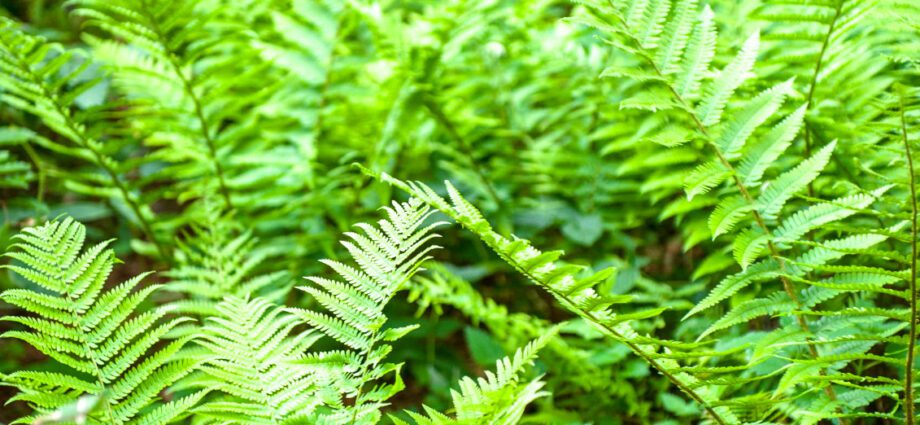Garden fern: care, planting
There is a legend according to which the fern blooms once a year on the night before Ivan Kupala, and whoever picks it will be able to see the location of all the treasures. Perhaps for this reason, or perhaps due to its exotic beauty, this plant has gained wide popularity among gardeners.
Fern prefers shade and moisture, is undemanding to the ground and takes root well in those conditions where other cultivated plants will feel uncomfortable. Planting is done in the spring, when frosts have passed and the soil warms up enough.
Garden fern loves shaded areas and moist soil
The garden fern reproduces in several ways:
- disputes;
- division of the bush;
- rhizome mustache;
- brood buds.
Spores are found at the bottom of the leaves in small tubercles. For self-growing seedlings in the fall, the tubercles are cut off with part of the leaf and placed in paper bags. In the second half of January, the crumbled pollen from the bags is sown into boxes on top of the ground, moistened and covered with glass. After 2 months, the spores will sprout in the form of moss. After some time, full-fledged seedlings will form, and then they are settled in separate pots. In the spring, the seedlings are transplanted into open ground.
Long-rooted fern varieties are easier to propagate by dividing the bush. In the spring, when the frost ends, the bush is dug up, divided into parts and seated in different holes.
An even easier way is breeding with rhizome whiskers, released in the spring by some varieties. It is enough to dig them into the ground a few centimeters and pour water over them. After some time, young shoots will appear from them.
Such varieties as kostenets and mnogoryadnik form brood buds on the leaves. They are carefully separated, placed on wet moss and covered with a glass jar. After 3 weeks, the buds are sufficiently rooted, and they are planted in the backyard.
The fern is undemanding to care for, the only condition for its normal development is moist soil. When watering, you should moisten not only the base of the bush, but also spray the foliage.
Before winter, it is not necessary to cut off the old leaves, in the spring the young growth will “hammer” them and the bush will again acquire a decorative look
In autumn, a layer of mulch consisting of sawdust and foliage is poured around the base of the bush. It is removed in the spring. Mulching with coniferous feet should be done after watering – this will help preserve moisture and strengthen the root system.
There are 10 fern varieties that grow in the tropical jungle and coniferous forests of central Russia. Many fern varieties have medicinal properties, and delicious dishes are prepared from young shoots of some species.










